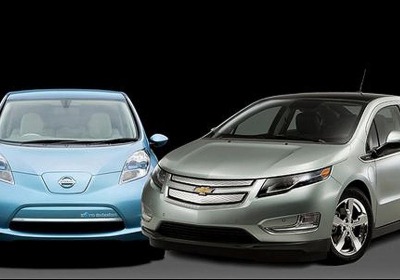First customers are key to EV sales success, execs say
Wed, 15 Jun 2011
Word of mouth is a key element to generating buyers for electric and plug-in hybrid vehicles.
Today, it's the early adapters, tech-savvy buyers who are embracing the technology and buying the plug-in hybrid Chevrolet Volt and the battery-powered Nissan Leaf.
But for these vehicles and similar models to go mainstream, anxiety about the technology needs to be eliminated.
"Cars on the road are simply the best way to get this done," said Mark Perry, director of product planning, Nissan North America.
"Collectively we can spend hundreds of millions of dollars, but at the end of the day it will be friends, neighbors, shared experiences, seeing vehicles on the road, seeing cars in a grocery store parking lot, seeing access to public charging" that will stimulate sales, Perry said Tuesday during the Automotive News Green Car Conference in suburban Detroit.
He expects 13,000 charging stations to be in operation across the United States in about a year.
Nissan has sold 2,186 Leafs since the battery-powered vehicle went on sale late last year. Chevrolet has sold 2,510 Volts. Sales also began last year.
Bringing the Leaf to U.S.
For now, the Leaf is imported from Japan. Nissan is completing a line at its plant in Smyrna, Tenn., that will assemble the Leaf beginning in December 2012. However, Nissan executives are now saying initial production may be delayed by complications related to the March 11 earthquake and tsunami in Japan.
Additional electric-powered vehicles are planned. Nissan estimates annual production capacity at the new plant at 150,000 vehicles.
Meanwhile, Chevrolet plans to expand Volt production to 60,000 vehicles annually at its Hamtramck, Mich., assembly plant. The plant is currently set up to build 10,000 Volts annually.
Cristi Landy, product marketing director for the Chevrolet Volt, agreed with Perry.
"The mainstream market is still really confused. We need more customer education as we move into the mass market and expect the volumes to go up. It is not an easy task. The fuel economy label confuses people because there are so many different terms on it. There are three different ways the EPA calculates miles per gallon," she said.
Not a golf cart
Some people who have not driven the Volt also have "a preconception that electric vehicles drive like a golf cart," Landy said.
In terms of describing Volt buyers, Landy said they are:
-- People who other people come to for advice about cars and electronics.
-- Typically are the first to have the latest technology.
-- Willing to try something new and unproven when making a big purchase.
-- Read about technology advancements and new product introductions nearly every day.
"They like to talk about their experiences, and we know they will serve as advocates for the next few waves of customers," she said.
Landy said 90 percent of Volt buyers are male, a high percentage are college graduates and 45 percent have advanced degrees. She said 86 percent did not own a General Motors vehicle. Among the trade-ins have been BMW, Mercedes-Benz and Lexus vehicles.
Landy said the top reasons given for buying a Volt are reducing dependency on foreign oil, it is American made, the Volt's on-board generator, and the technological innovation.
Driving stats
According to a survey, she said that through May two-thirds of the miles driven by Volt owners are on electric power, about 1.4 million electric miles in all.
"Most are going a month without a stop at a gas station," traveling an average of about 900 miles until they need to fill up, she said.
Based on consumer surveys Nissan has learned that the average Leaf trip is seven miles and travels about 60 miles per day, Perry said. On average, the Leaf is charged about two hours per night.
Perry said there have been a few surprises since the Leaf went on sale.
Nissan is selling 90 percent of the Leafs and leasing 10 percent. He said the automaker expected only 10 percent to purchase. Additionally, the majority of buyers are installing their own charging stations. Nissan expected only a small percentage.
Finally, the installation of a charging station has been more of a challenge for Leaf owners because the regulations vary among states and municipalities. Additionally, the cost to install the station can vary greatly depending on the locale and the complexity of the installation.
By Rick Kranz- Automotive News

